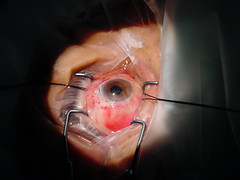We are a organisation distributing international renowned brands of medical equipment having application in ENT field and associated areas. we are in the industry with various other business activities in same field for more than 3 decades
We are looking for sales and service engineers to market these products by candidates who have experience in marketing products like endoscope and equipment to specialty departments.
Candidates must have prior experience of 1 to 3 years in marketing ,meeting doctors/ hospitals and installation , of similar products and experience in servicing of these equipment.
Candidates experienced in covering more than 1 state in South is preferable with knowledge of other languages.They must be in a position to travel.
Likely package varies from Rs 25000 to rs 40 000 depending on the previous experience.
No of post 2.( sr and jr) – sales and service engineers
Apply now to krishgan39@gmail.com
Permanent link to this post (150 words, estimated 36 secs reading time)
 Computer simulations “provide patients with a realistic picture of what they would look like after their surgery and are constrained by what is actually surgically possible,” said biomedical engineer Mia Markey. Photo by Melissa Mixon.
Computer simulations “provide patients with a realistic picture of what they would look like after their surgery and are constrained by what is actually surgically possible,” said biomedical engineer Mia Markey. Photo by Melissa Mixon.
This story was first published on the Cockrell School of Engineering Web site. It was written by Melissa Mixon.
Faculty and students at the Cockrell School of Engineering are developing ways for cancer patients and children born with facial deformities to make more informed decisions about which reconstructive surgeries would be most aesthetically pleasing and practical based on their individual body types and personal preferences.
This is a preview of Biomedical Engineering Simulation peers into your Future looks after Surgery.
Read the full post (1401 words, 2 images, estimated 5:36 mins reading time)
Ridley’s implantation (1949) of the first intraocular lens (IOL) marked the beginning of a major change in the practice of ophthalmology. The IOLs are microlenses placed inside the human eye to correct cataracts, nearsightedness, farsightedness, astigmatism, or presbyopia. There are two types of IOLs: anterior chamber lenses,which are placed in the anterior chamber of the eye between the iris and the cornea, and posterior chamber IOLs, which are placed in the posterior chamber behind the iris and rest against the capsular bag. Procedures for implanting the IOLs and technologies for manufacturing them in various sizes, thicknesses, and forms as well as with various materials progressed tremendously in the last decade. Multifocal IOLs are one of the important signs of this progress. While monofocal IOLs, the most commonlyused, are designed to provide clear vision at one focal distance, the design of multiple optic (multifocal) IOLs aims to allow good vision at a range of distances.

ShuntCheckT is the first device to allow quick, non-invasive detection of cerebrospinal fluid (CSF) flow through shunts. Using a system based on transcutaneous thermal convection technology, ShuntCheckT can be used to painlessly evaluate the function of a shunt quickly and accurately in an office, Emergency Room, or any ambulatory setting. This simple procedure involves placing an ice cube over the shunt. A single use, disposable temperature sensor is placed on the skin over the shunt tubing. As the CSF flows past the area where the ice is applied, the fluid cools. The temperature sensor detects this change in temperature and transmits the data to the handheld ShuntCheckT BioDisplay device. The time and temperature readings are analyzed by ShuntCheck’s software and generate a “Flow Confirmed” or “Flow Not Confirmed”.
This is a preview of Shunt Check- Detects CSF Non Invasively through Shunts.
Read the full post (446 words, 3 images, estimated 1:47 mins reading time)
ABOUT THE SOUND BITE
SoundBite hearing system is the world’s first and only non-surgical and removable hearing solution designed to imperceptibly transmit sound via the teeth to help people who are essentially deaf in one ear regain spatial hearing ability and rejoin the conversation of life.

It employs a well-established principle called bone conduction to deliver clear, high quality sound to the inner ear. Nearly invisible when worn, the SoundBite system consists of an easy to insert and remove ITM (in-the-mouth) hearing device – which is custom made to fit around either the upper left or right back teeth – and a small microphone unit worn behind the ear. No modifications to the teeth are required.
This is a preview of Sound bite-World’s first and only non-surgical and removable hearing solution gets FDA clearance.
Read the full post (599 words, 8 images, estimated 2:24 mins reading time)


 Computer simulations “provide patients with a realistic picture of what they would look like after their surgery and are constrained by what is actually surgically possible,” said biomedical engineer Mia Markey. Photo by Melissa Mixon.
Computer simulations “provide patients with a realistic picture of what they would look like after their surgery and are constrained by what is actually surgically possible,” said biomedical engineer Mia Markey. Photo by Melissa Mixon.

